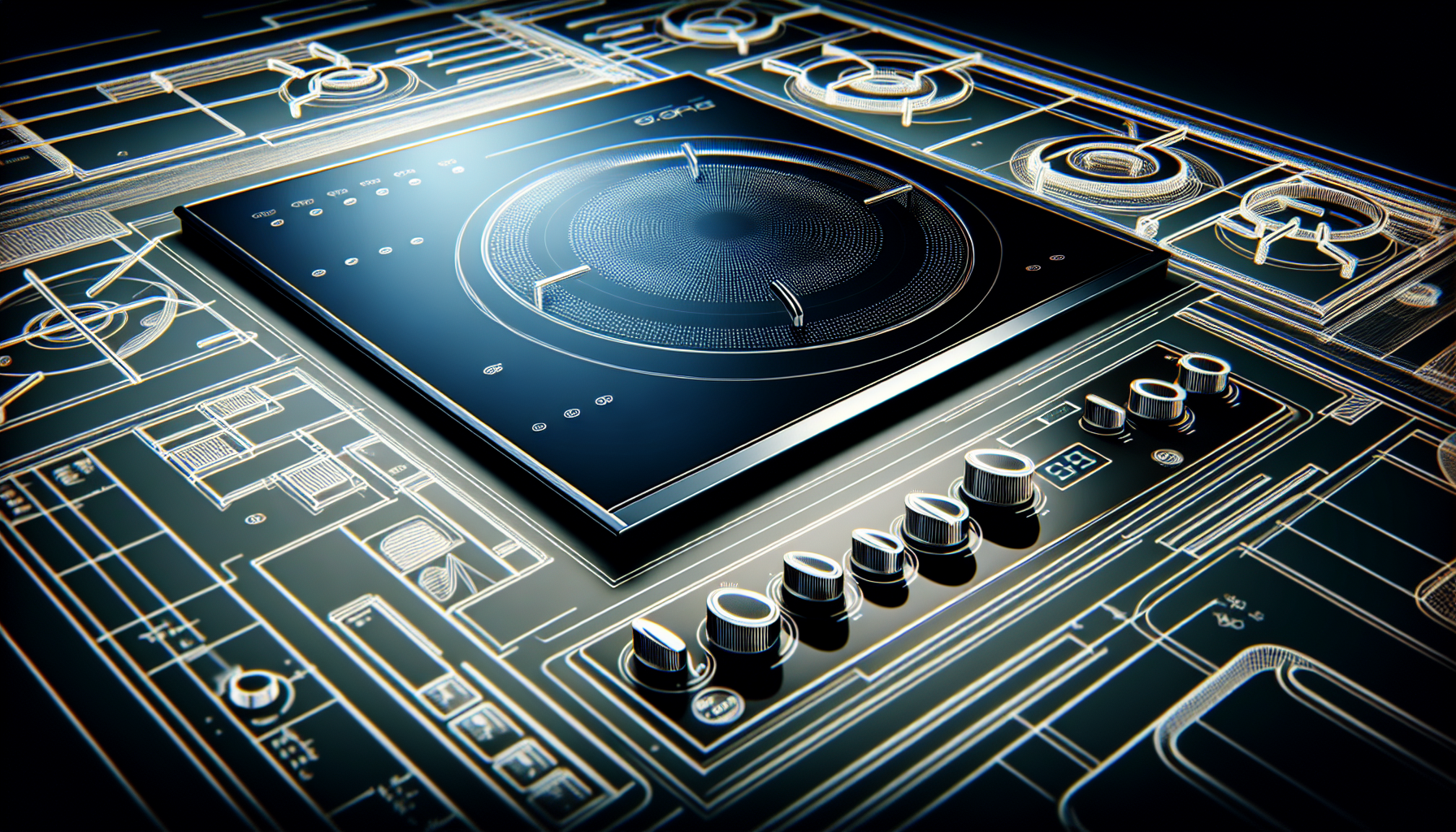Imagine a kitchen where cooking becomes a breeze, where you have a sleek and convenient cooktop that sits right on your countertop, allowing you to whip up meals with ease. Say goodbye to traditional stovetops and say hello to the new way of cooking. In this article, we will explore the fascinating world of cooktops that sit on the counter and discover why they are becoming a favorite among home cooks everywhere. So get ready to elevate your culinary experience as we delve into the wonders of this innovative kitchen appliance.
What Is The Cooktop That Sits On The Counter?

CHECK OUT COUNTERTOP BURNERS ON AMAZON
Overview of a Countertop Cooktop
A countertop cooktop, also known as a portable cooktop or electric hot plate, is a compact kitchen appliance that sits on the counter and provides a cooking surface for preparing meals. It is a convenient alternative to traditional stovetops and ranges, offering flexibility and versatility in any kitchen setting. Countertop cooktops are available in different sizes and designs to suit the needs and preferences of individual users.
Different Types of Countertop Cooktops
Countertop cooktops come in various types, each offering unique features and functionalities. The most common types include electric cooktops, induction cooktops, and gas cooktops.
-
Electric Cooktops: These cooktops use electric heating elements to generate heat for cooking. They are easy to use, offer precise temperature control, and heat up quickly. Electric cooktops are available with coil burners or smooth glass surfaces.
-
Induction Cooktops: Induction cooktops use electromagnetic technology to heat the cookware directly, rather than the cooktop surface. This results in faster and more efficient cooking, as well as enhanced safety, as the surface remains cool to the touch. However, induction cooktops require magnetic cookware to work effectively.
-
Gas Cooktops: Gas cooktops use a flame produced by either natural gas or propane to heat the cookware. They offer instant heat and precise temperature control, making them a favorite among professional chefs. Gas cooktops require a gas line for installation and may have a higher initial cost compared to electric or induction cooktops.
Advantages of Countertop Cooktops
Countertop cooktops offer several advantages that make them a popular choice for many households:
-
Portability: Unlike built-in cooktops, countertop cooktops can be easily moved and placed anywhere on the counter, making them ideal for small kitchens, rental properties, or outdoor cooking.
-
Space Saving: With their compact design, countertop cooktops help save valuable counter space, allowing you to maximize the available area in your kitchen.
-
Versatility: Countertop cooktops are available in various sizes and configurations, offering a range of cooking options, such as boiling, frying, simmering, and grilling. Some models even offer additional features like built-in griddles or wok burners.
-
Energy Efficiency: Induction cooktops are known for their energy efficiency, as they only heat the cookware and not the surrounding area. They can reduce cooking time and save energy costs in the long run.

CHECK OUT COUNTERTOP BURNERS ON AMAZON
Considerations Before Purchasing a Countertop Cooktop
Before purchasing a countertop cooktop, it is important to consider certain factors to ensure it meets your specific needs:
-
Size and Design: Choose a cooktop that fits your available counter space and complements the overall aesthetics of your kitchen. Consider the number of burners or cooking zones required based on your typical cooking needs.
-
Power Source: Determine whether you prefer an electric cooktop, induction cooktop, or gas cooktop, based on your cooking preferences, compatible cookware, and availability of gas lines.
-
Controls and Features: Look for user-friendly controls and features that enhance convenience and safety, such as touch controls, digital displays, and safety lock functions.
-
Budget: Set a budget for your countertop cooktop purchase and compare prices and features across different brands and models. Consider any additional costs for installation or maintenance.
Installation and Maintenance of Countertop Cooktops
Countertop cooktops are typically easy to install and require minimal maintenance. Here are some general guidelines:
-
Installation: Most countertop cooktops come ready to use out of the box and simply need to be placed on a flat, stable surface near an appropriate power source or gas line. Follow the manufacturer’s instructions and ensure proper ventilation if using a gas cooktop.
-
Cleaning and Maintenance: Regularly clean the cooktop surface and any removable parts according to the manufacturer’s instructions. Avoid using abrasive or harsh cleaning agents that can damage the surface. For electric and induction cooktops, ensure the surface is completely cool before cleaning to prevent burns.
Popular Brands of Countertop Cooktops
When it comes to countertop cooktops, there are several reputable brands to consider. Some popular options include:
- Bosch
- GE
- KitchenAid
- Electrolux
- Frigidaire
- Whirlpool
- NuWave
- Cuisinart
These brands offer a wide range of countertop cooktop models with different features and price points, ensuring there is an option for every budget and cooking preference.
Comparison Between Countertop Cooktops and Built-in Cooktops
Countertop cooktops and built-in cooktops each have their own advantages and considerations. Here’s a quick comparison:
-
Countertop Cooktops: Portable and versatile, countertop cooktops are ideal for small kitchens, rentals, or outdoor cooking. They offer flexibility in terms of placement and can easily be moved. However, they may occupy counter space and require additional storage when not in use.
-
Built-in Cooktops: Built-in cooktops are integrated into the kitchen counter and provide a sleek, seamless look. They usually offer more burners or cooking zones and are permanently installed, resulting in a clean and organized appearance. However, installation can be more complex, and they may not be suitable for those who frequently move or rent their homes.
Ultimately, the choice between countertop cooktops and built-in cooktops depends on your specific needs, kitchen layout, and personal preferences.
How to Use a Countertop Cooktop Safely
To ensure the safe and efficient use of a countertop cooktop, follow these guidelines:
-
Read the Instruction Manual: Familiarize yourself with the manufacturer’s instructions and guidelines before using the cooktop. This includes understanding the specific safety features and warnings.
-
Keep Flammable Objects Away: Maintain a clear area around the cooktop, free from any flammable objects such as kitchen towels, curtains, or plastic containers. This reduces the risk of accidental fires.
-
Use Proper Cookware: Use cookware that is suitable for the specific type of cooktop you have. For example, use magnetic cookware for induction cooktops and ensure the size of the cookware matches the burner size for electric or gas cooktops.
-
Monitor Cooking: Never leave the cooktop unattended while cooking. Keep an eye on the food and regularly check that the stove is turned off after use.
-
Practice Proper Ventilation: Ensure adequate ventilation in the area where the cooktop is being used. This helps remove any cooking odors, smoke, or excess heat from the kitchen.
Troubleshooting Common Issues with Countertop Cooktops
If you encounter any issues with your countertop cooktop, here are some common problems and potential solutions:
-
Inconsistent Heating: If the cooktop is not heating evenly or consistently, ensure that the cookware used has a flat and level bottom. Uneven cookware can lead to uneven heating. If the issue persists, contact the manufacturer or a professional for further assistance.
-
Burner Not Turning On: If a burner fails to turn on, check that the cooktop is properly connected to the power source or gas line. Inspect the control settings and ensure they are functioning correctly. If the issue persists, consult the manufacturer or a qualified technician.
-
Cleaning Difficulties: If you encounter difficulty cleaning the cooktop surface, avoid using abrasive cleaners or scouring pads that can scratch or damage the surface. Instead, use non-abrasive cleaning agents recommended by the manufacturer or consider using specialized cooktop cleaning solutions.
If you experience any other issues or concerns with your countertop cooktop, refer to the manufacturer’s troubleshooting guide or seek professional assistance for a safe and effective resolution.
Conclusion
Countertop cooktops offer a convenient and versatile cooking solution for various kitchen needs. With a range of types, sizes, and features available, these portable cooktops cater to different cooking preferences and offer flexibility in placement. By considering factors such as size, power source, controls, and budget, you can choose the perfect countertop cooktop for your kitchen. Remember to prioritize safety by following the manufacturer’s instructions, practicing proper ventilation, and using suitable cookware. In case of any issues, refer to the troubleshooting guide or seek professional assistance. A countertop cooktop can transform your cooking experience, making meal preparation a breeze while maximizing your available counter space.
